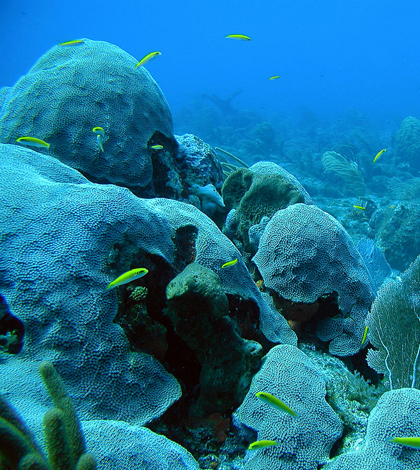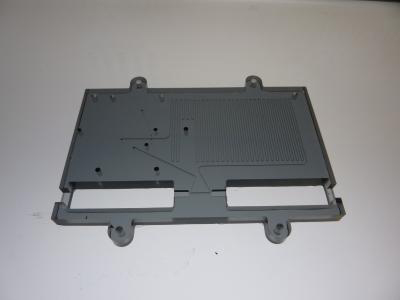Ocean acidification prompts low-cost, long-term pH sensor

Rising ocean acidity threatens coral's ability to form their skeletons (Credit: NOAA's National Ocean Service, via Flickr)
A new generation of small, low-cost sensors for long-term monitoring of the pH of seawater is within reach, British researchers report.
Accurately measuring ocean pH is important because scientists say human activity is causing the seas to become more acidic, with potentially alarming consequences for marine food chains.
Oceans absorb about a quarter of global carbon emissions, triggering chemical reactions that increase the acidity of seawater. Acidification reduces the availability of calcium carbonate minerals that some phytoplankton, corals, mussels and other species use to build their skeletons and shells.
“When it’s more acidic, they have difficulty to produce their shells,” said Victoire Rérolle, a postdoctoral researcher at the National Oceanography Centre in Southampton, England. “So this is threatening a whole system.”
Ocean acidification is a gradual process that requires long-term monitoring, so researchers need instruments that can be deployed in remote areas and take repeated measurements over long periods.
Currently most devices for in-situ pH measurements use electrodes, which are incapable of the precision needed to study ocean acidification, Rérolle said.
The more promising technology is spectrophotometry, which involves passing light through a substance to determine its chemical properties.
“There’s no off-the-shelf instrument currently available for that,” Rérolle said. “The components are quite expensive and it’s quite big. So the challenge is that we need to miniaturize it and make it cheap enough for wide production.”
Rérolle and colleagues say they’ve made significant progress in addressing that challenge.

The microfluidic chip used in the pH micro sensor. Dimensions: 13 by 8 cm. (Credit: National Oceanography Centre)
The micro sensor they developed took accurate measurements during more than a month aboard a research vessel, they report in the journal Analytica Chimica Acta.
The tool uses an indicator dye that changes color as pH changes—not unlike the litmus strips familiar to high school chemistry students—contained in a microfluidic chip. It also uses a spectrophotometer to measure light from an LED as it passes through the dyed water, and pumps and valves to control the water sample.
“What’s really new in our system is we’re using a microfluidic chip to miniaturize the system,” Rérolle said.
That’s important because it means the tool requires few inputs, so it could be deployed for a long time without maintenance, Rérolle said. For example, it used less than 30 milliliters of indicator dye during the entire test deployment.
The instrument could have uses beyond monitoring global change, Rérolle said. For instance, it could be deployed to detect leaks from oil drilling operations or from projects where atmospheric carbon is pumped undersea for storage.
In its current form the micro sensor is only geared for use onboard a vessel, but Rérolle said she aims to have a prototype for an in situ model developed by the summer.
The latest findings on ocean acidification underscore the urgent need for such a tool. Ocean acidity has risen 26 percent since the Industrial Revolution and will likely more than double by century’s end, costing global fisheries $130 billion, according to a United Nations report.
Already acidification has been blamed for a collapse of the Pacific Northwest oyster fishery that began in 2005.
Top image: Rising ocean acidity threatens coral’s ability to form their skeletons (Credit: NOAA’s National Ocean Service, via Flickr)




0 comments